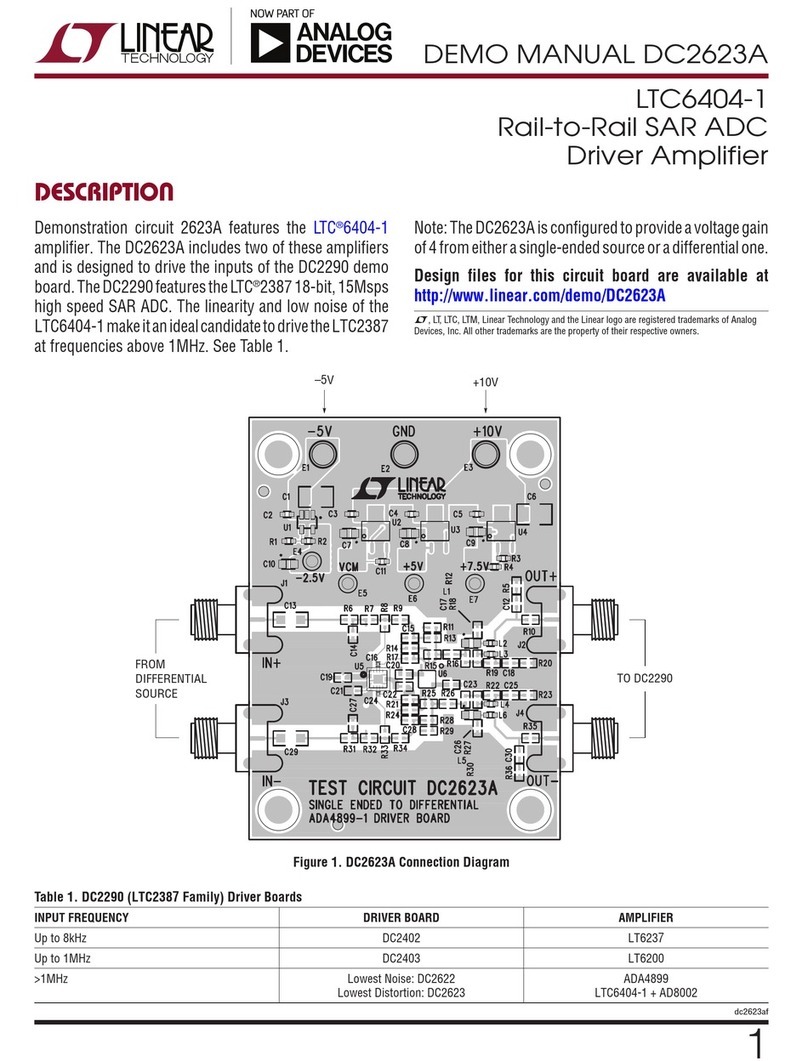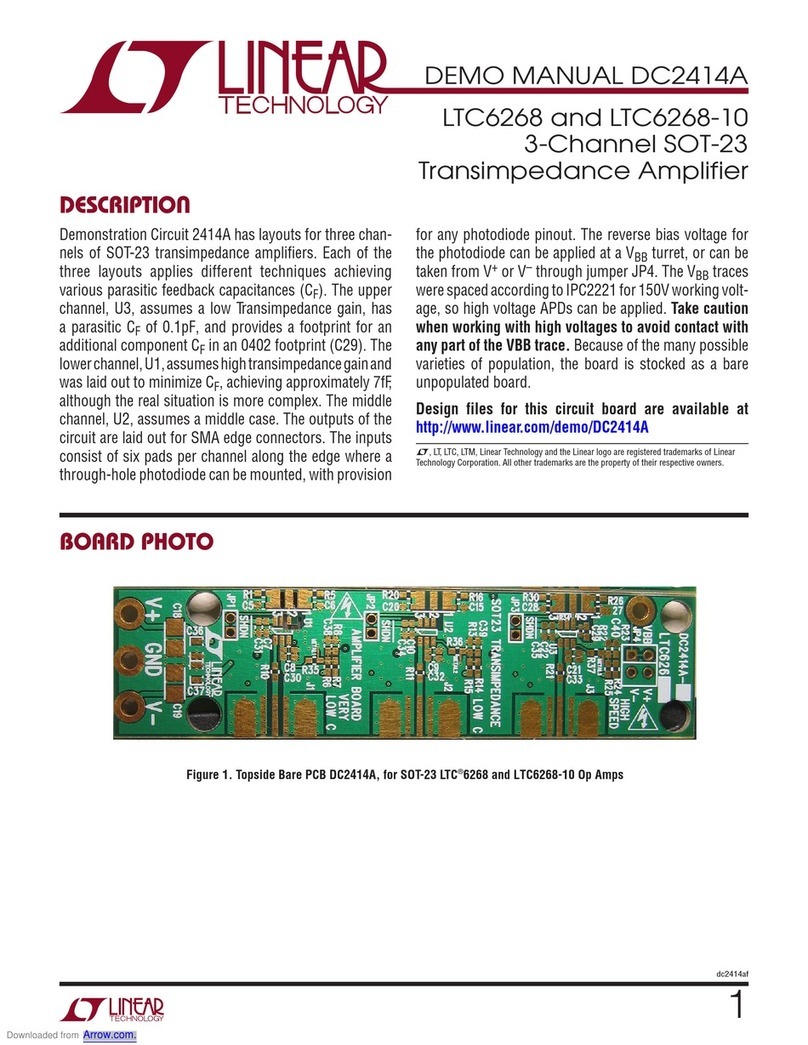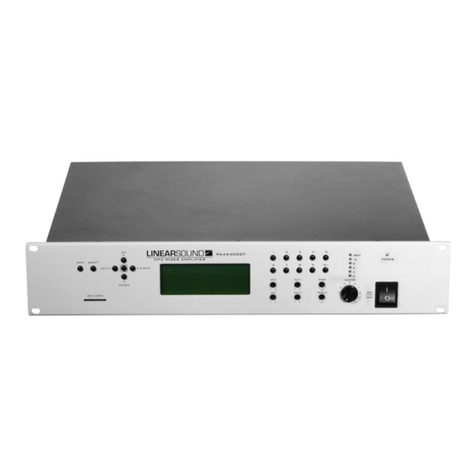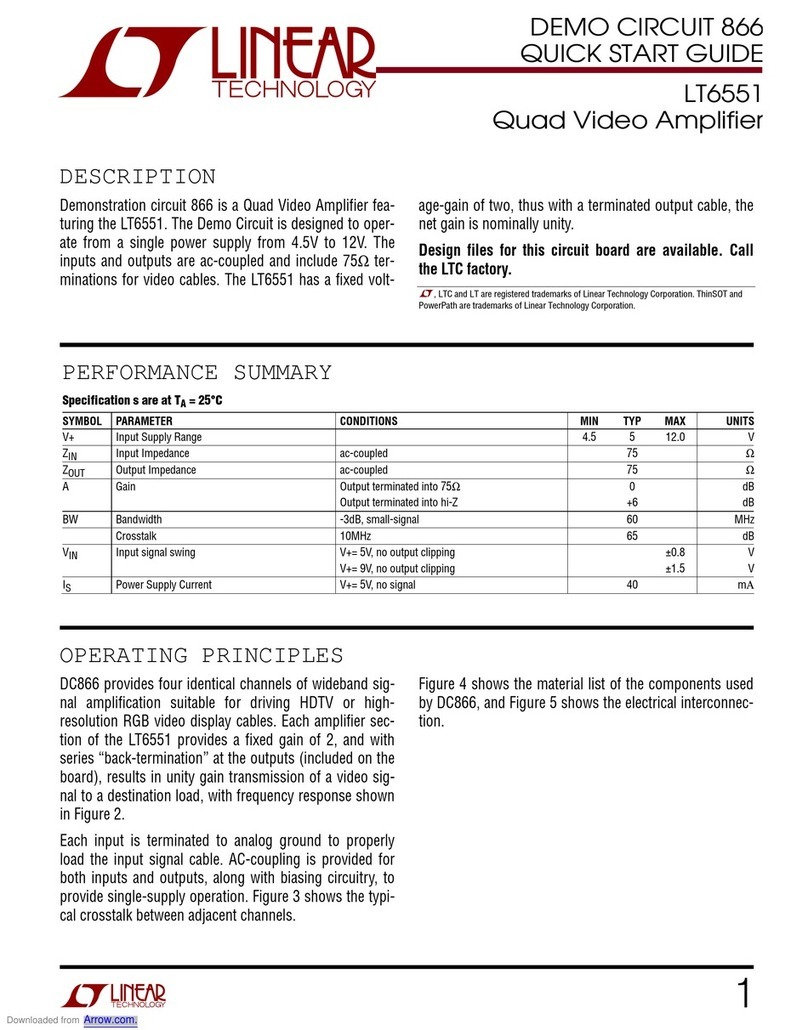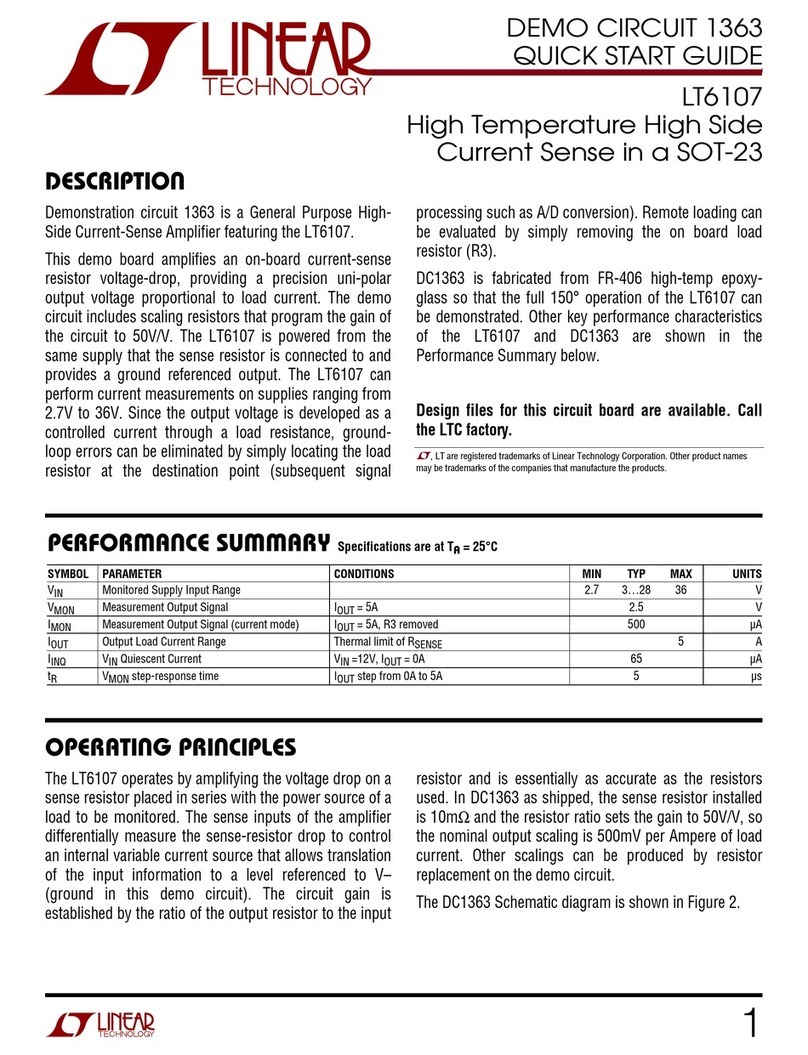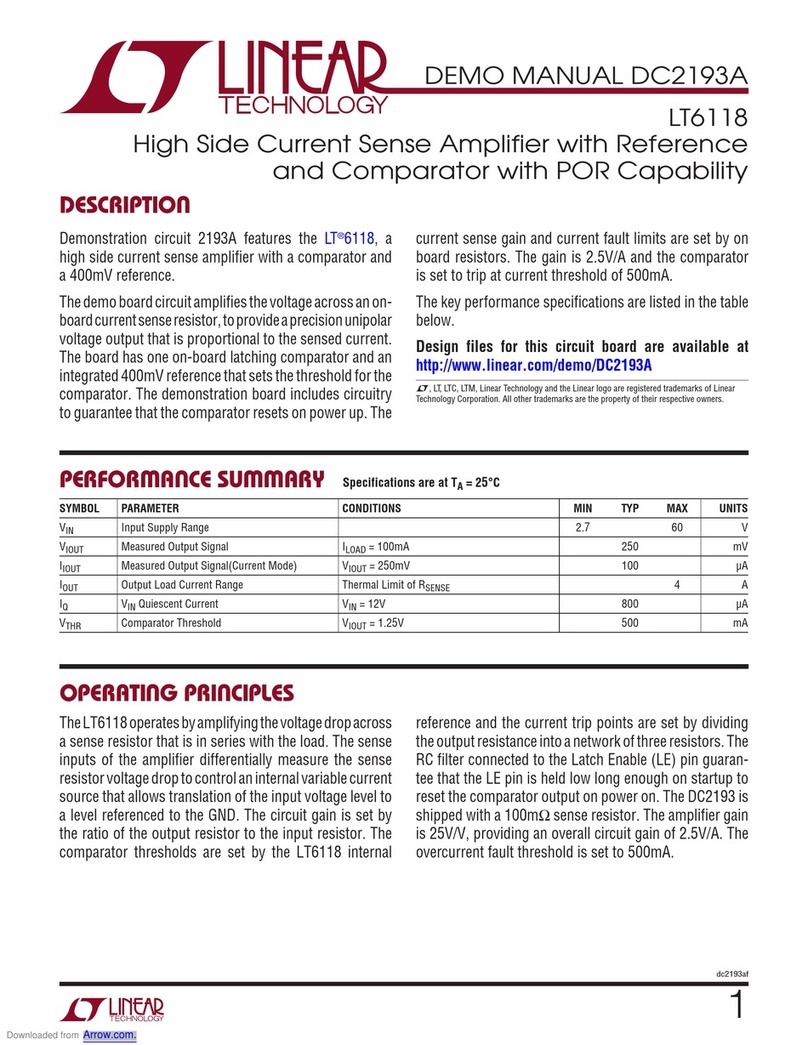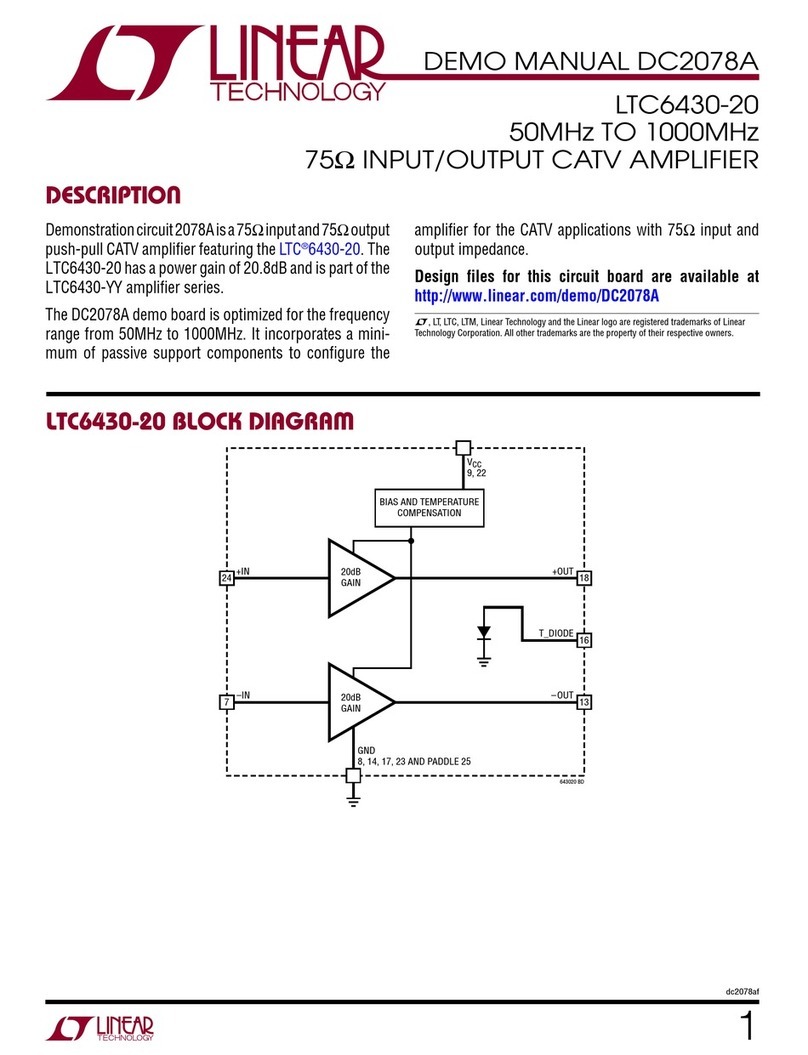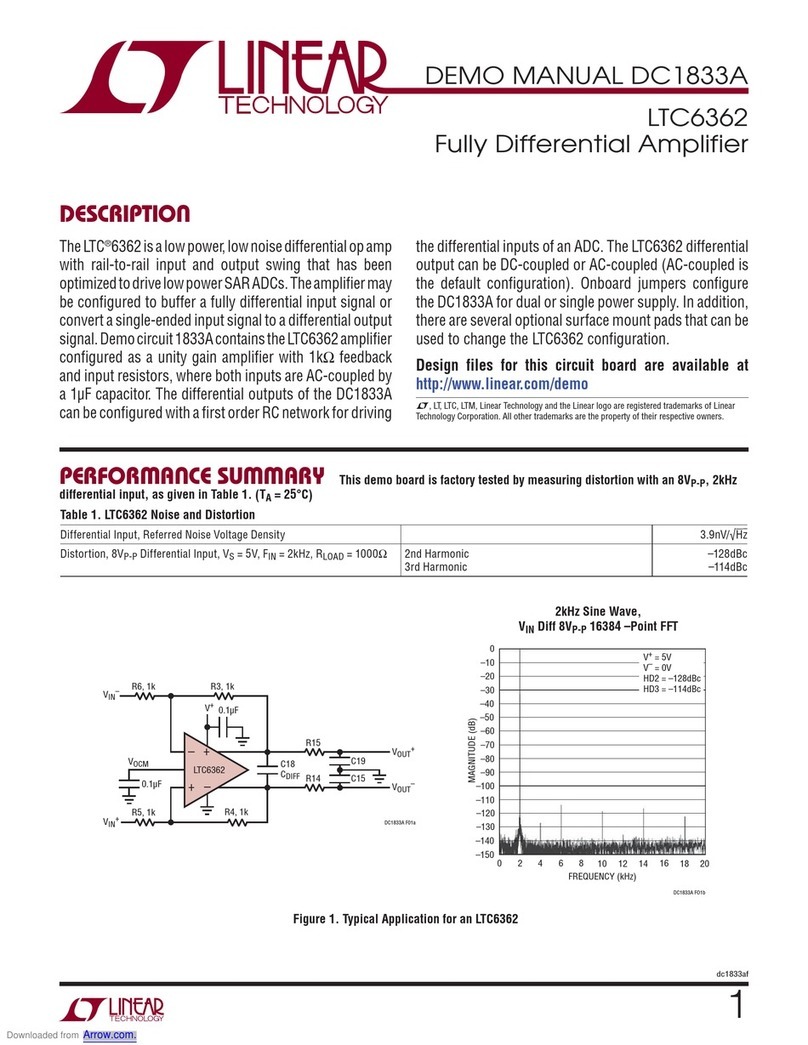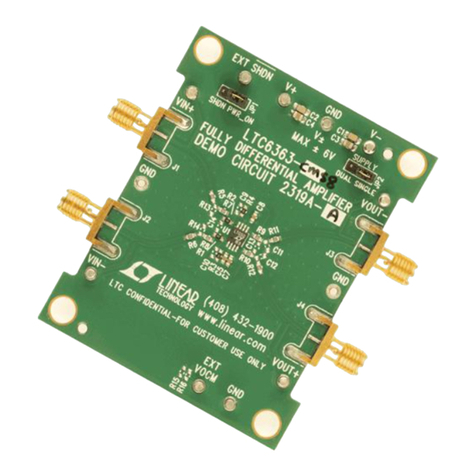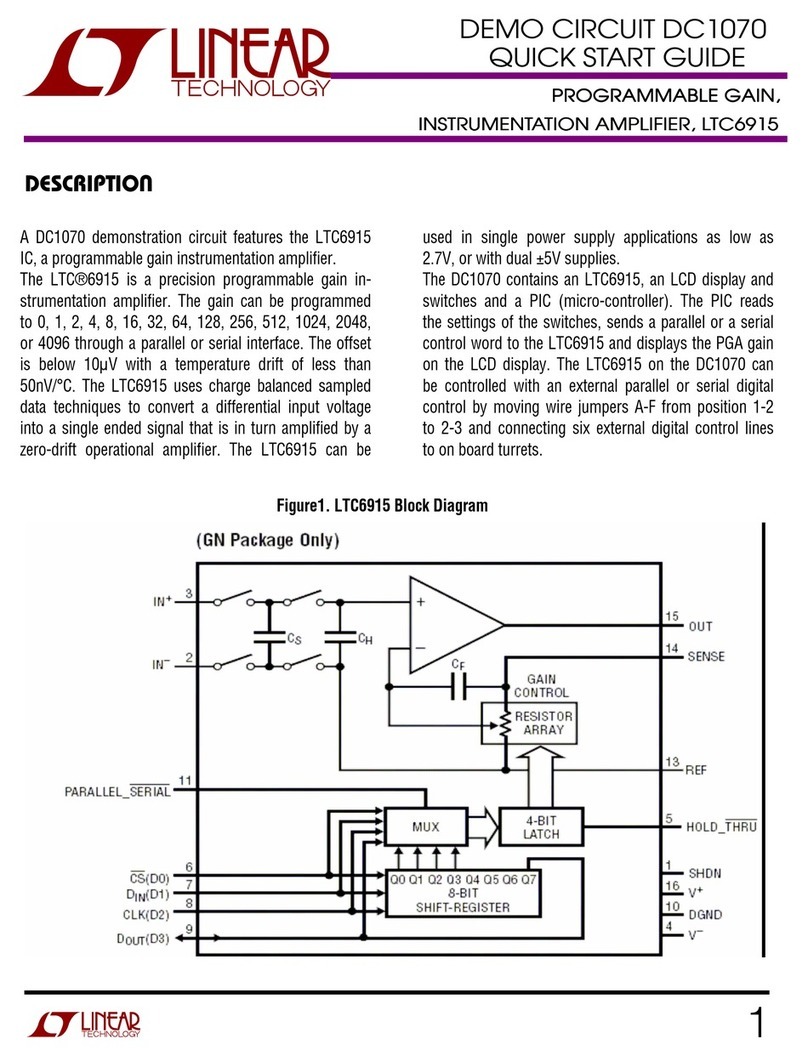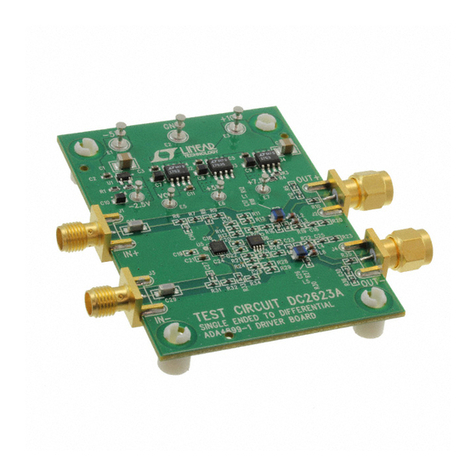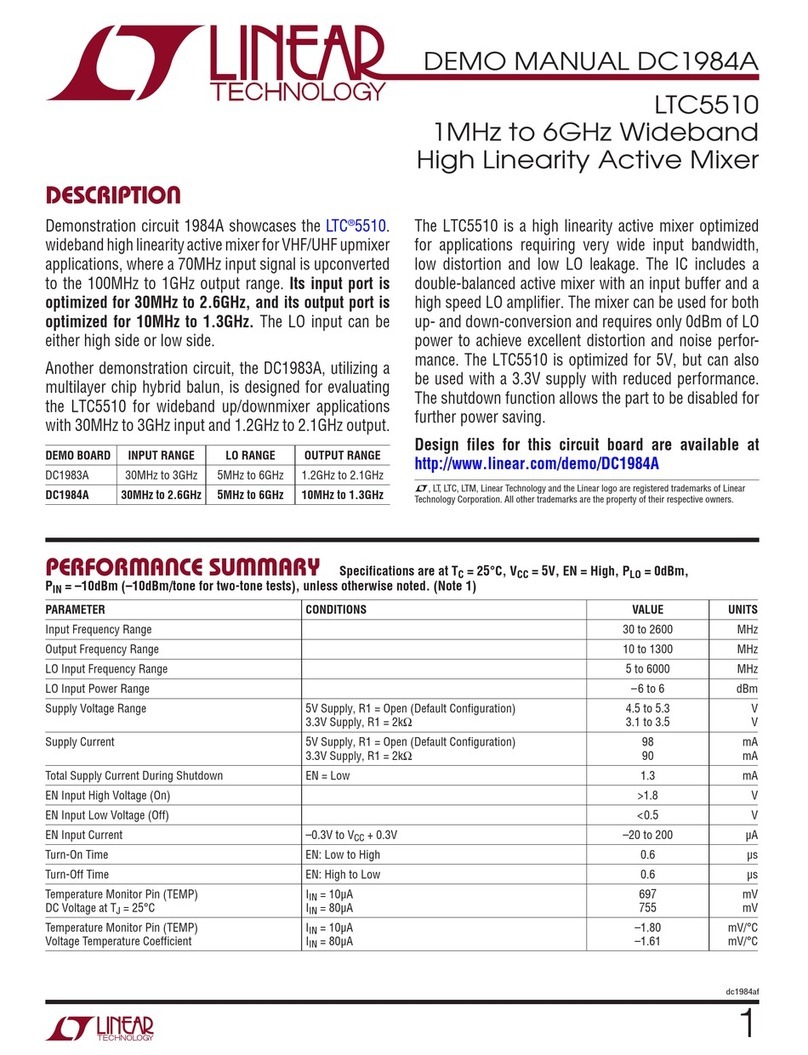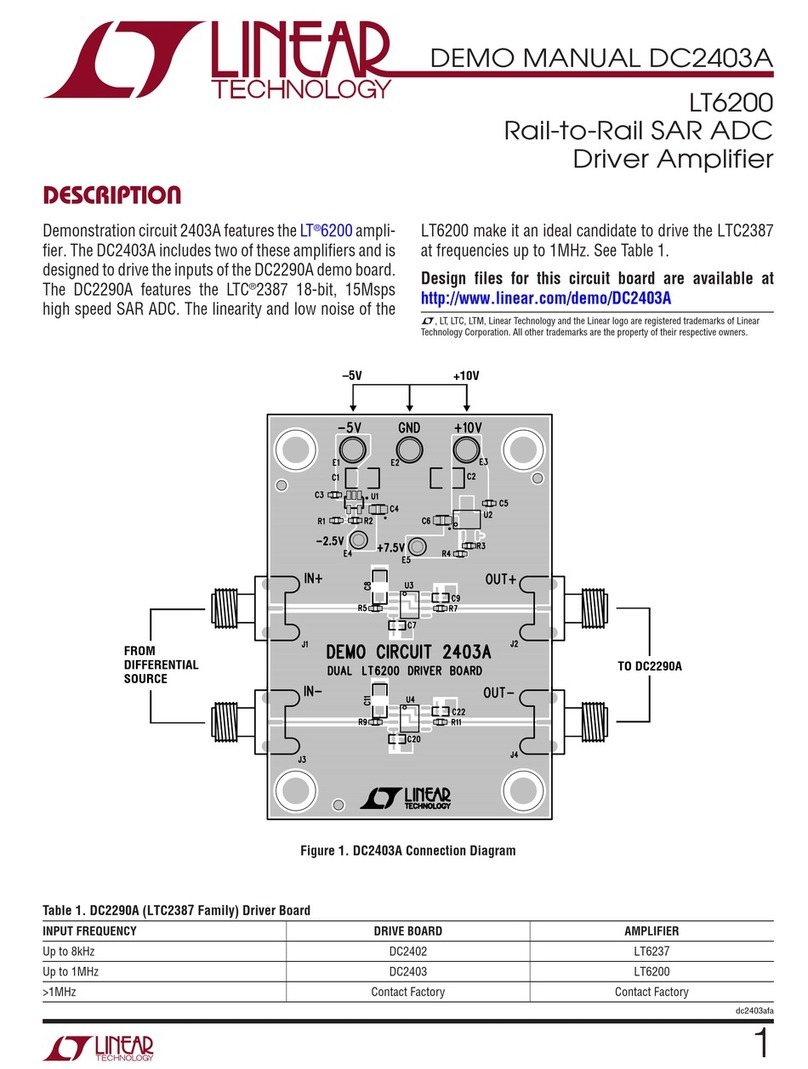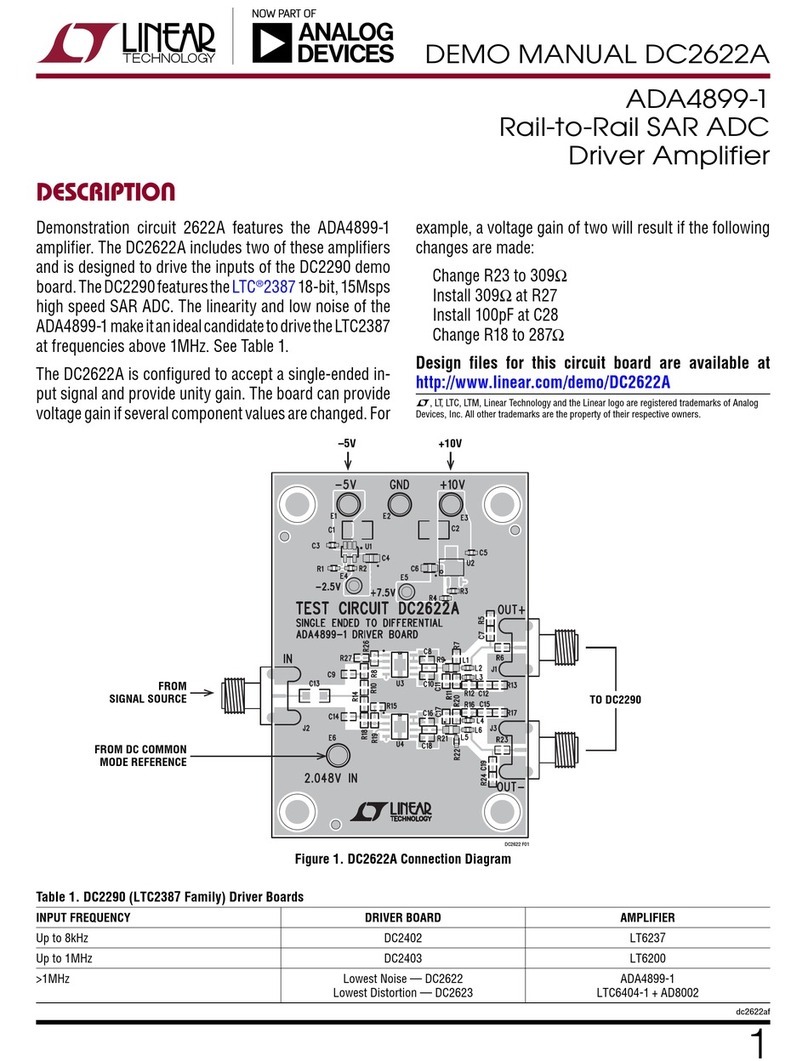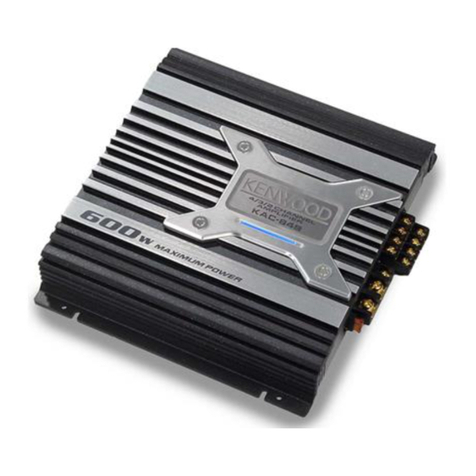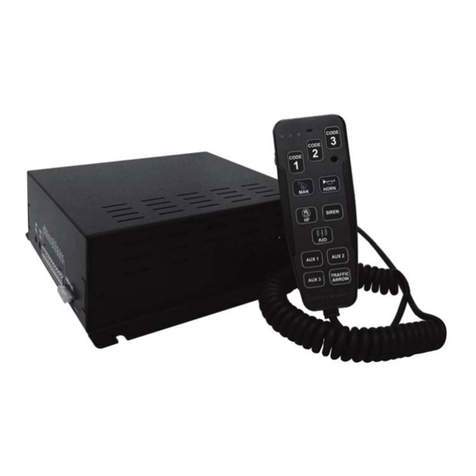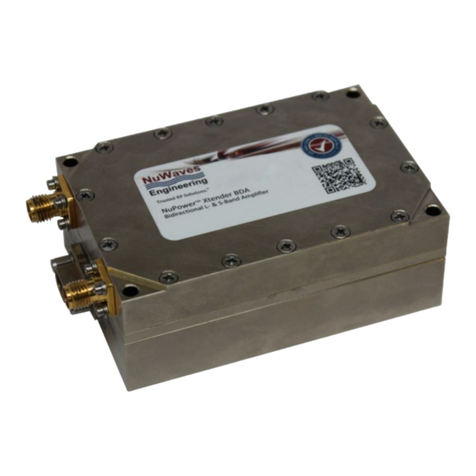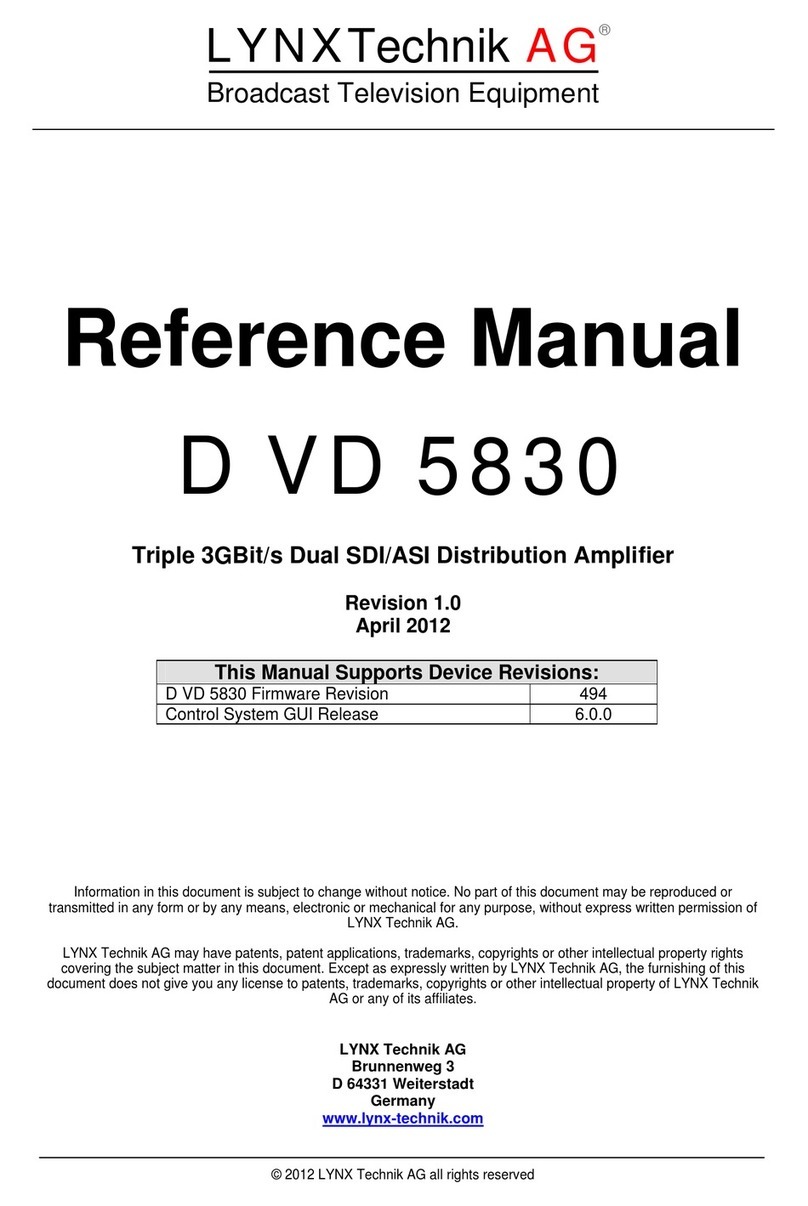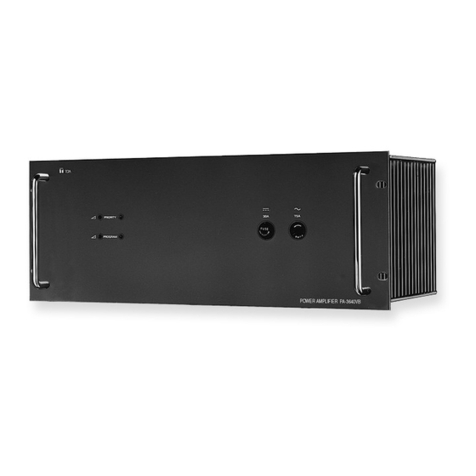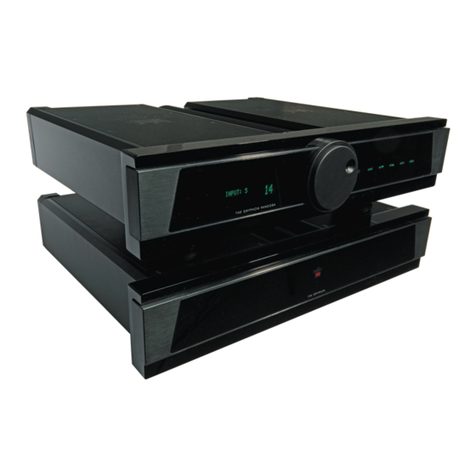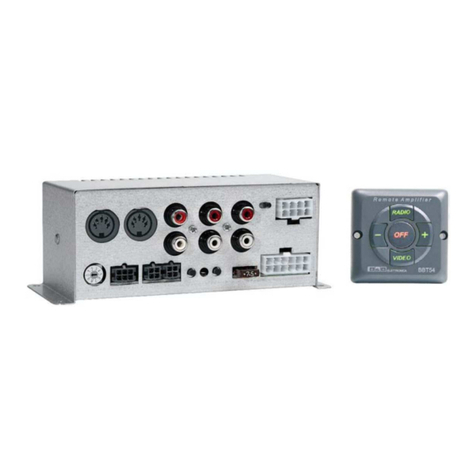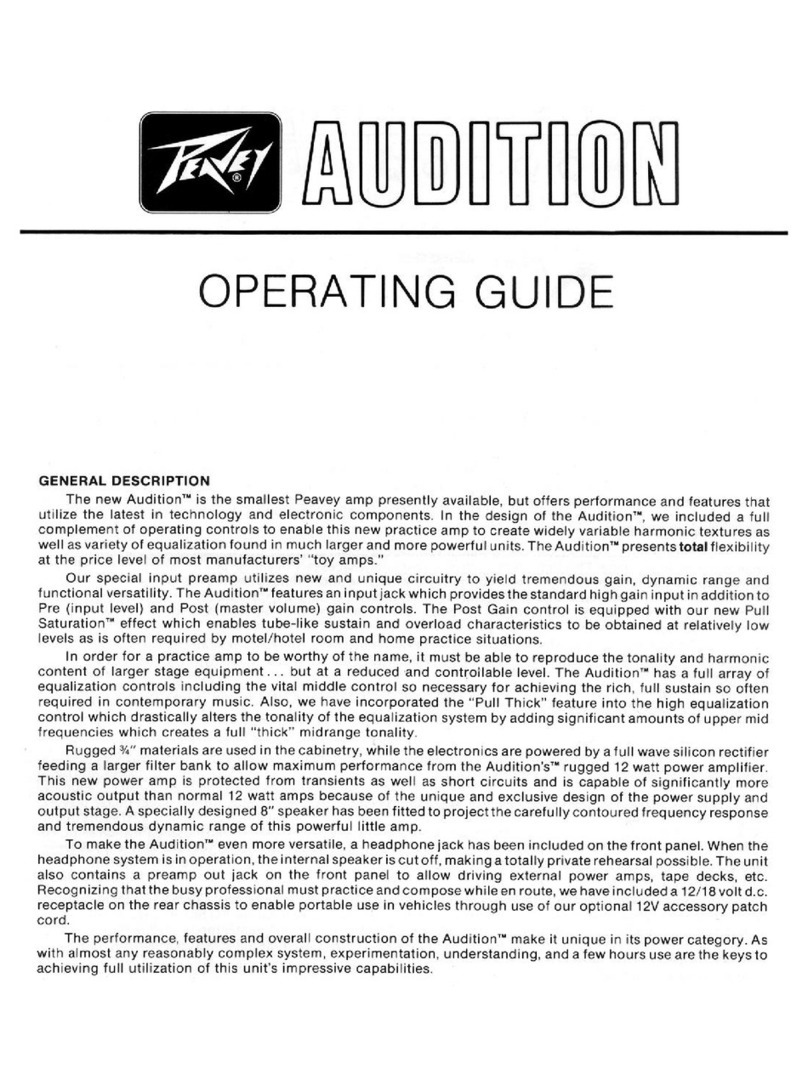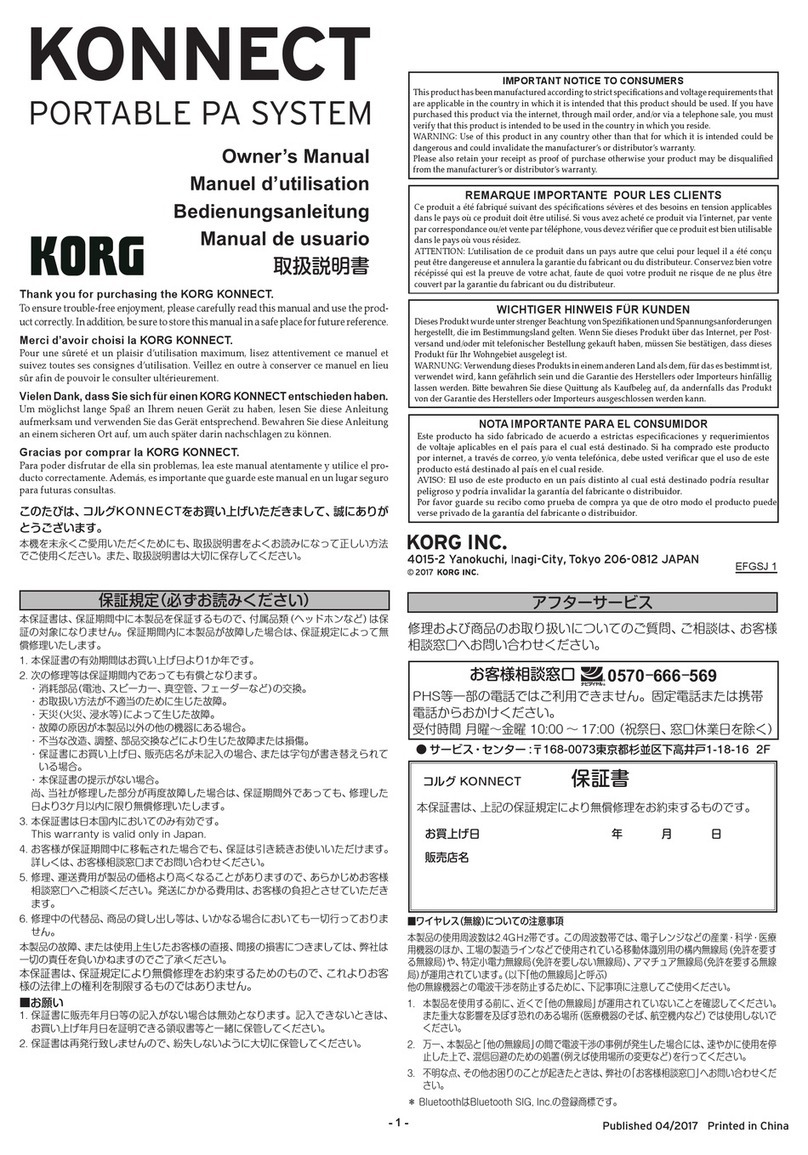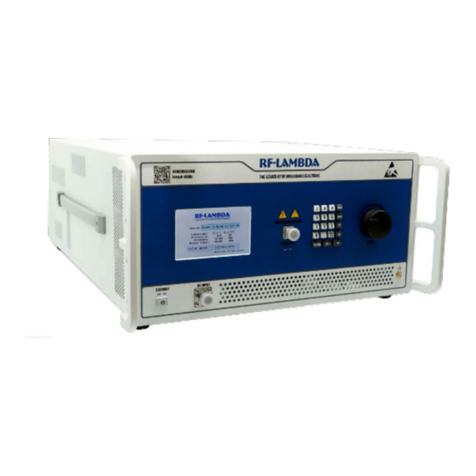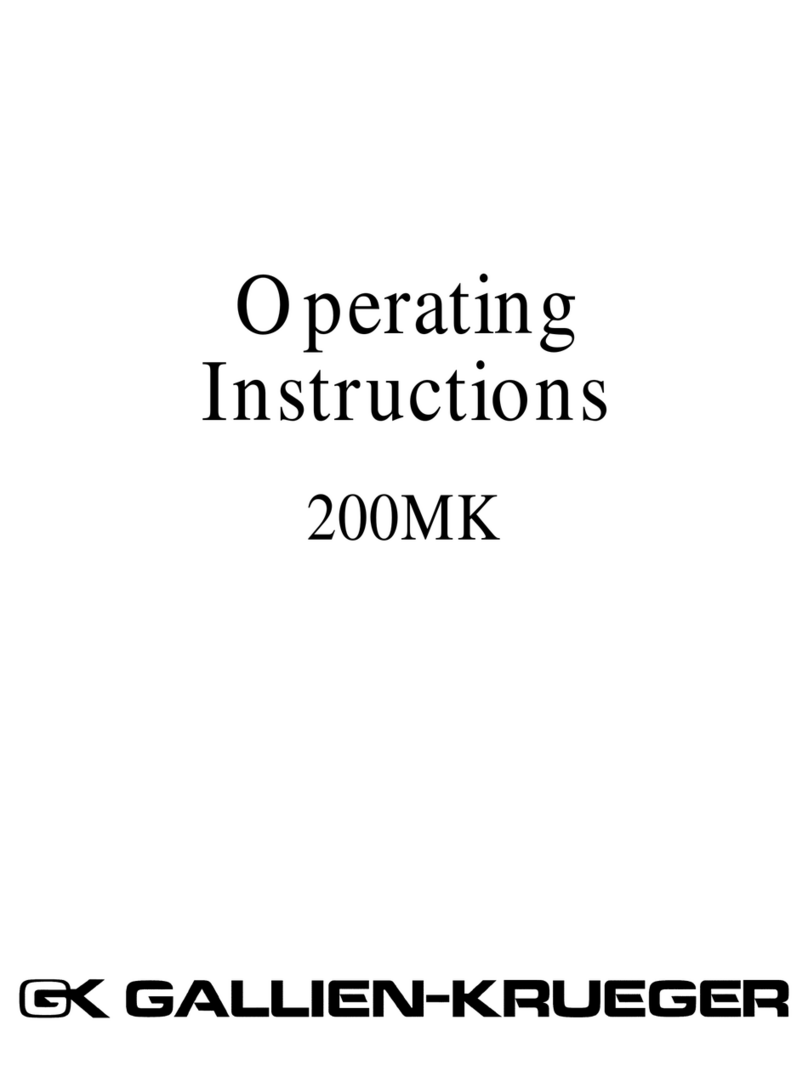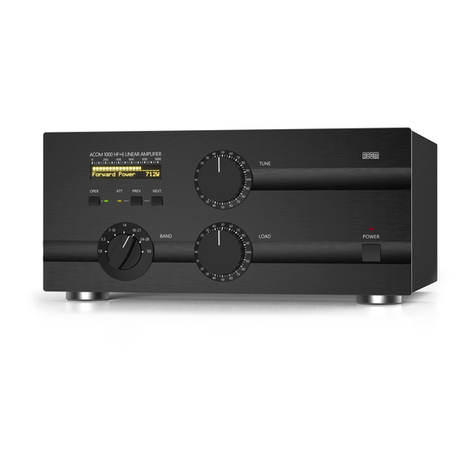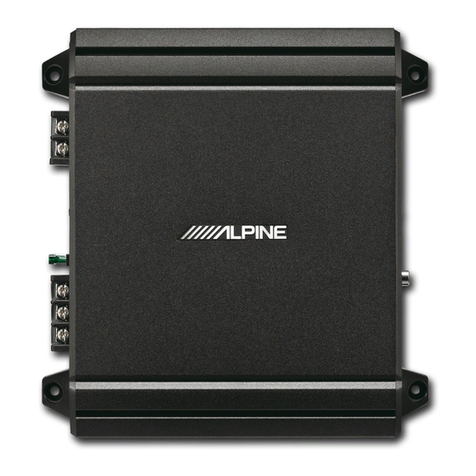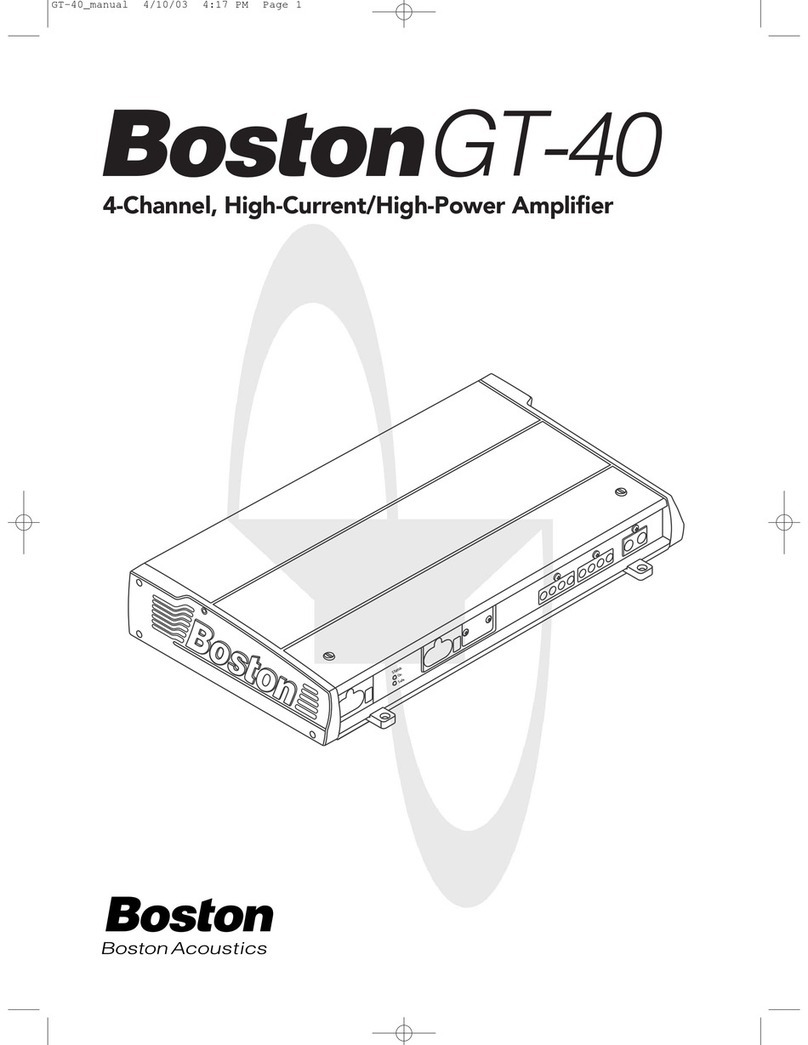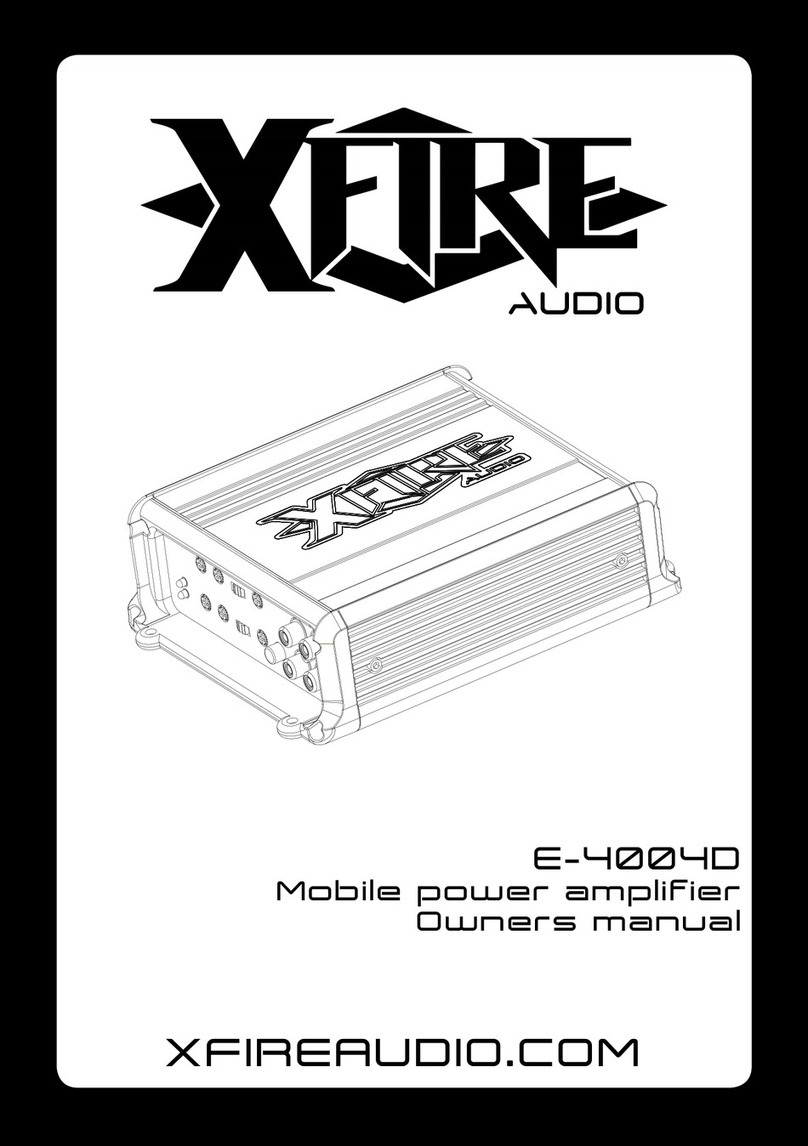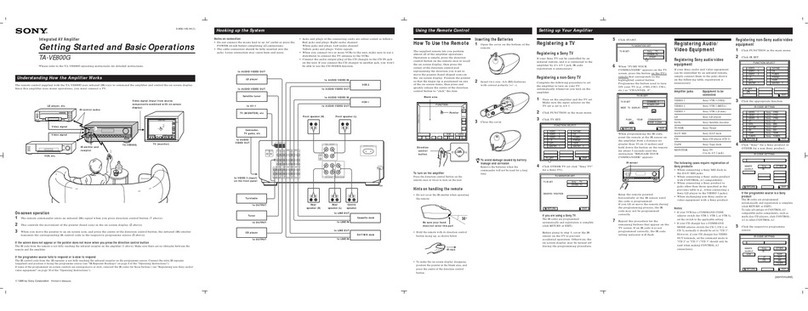
LT1970
5
OPERATIONAL NOTES
M inim um Supply Voltage
The LT1970 can operate w ith a total supply voltage of
only 5 Volts. For convenience, a 5V regulator is included
on DC453 to provide the control voltage for the current
limit ad ustments. To keep this regulator properly biased
the minimum positive Vcc supply must be at least 8 Volts
w hen using either a single or dual pow er supply. Low er
supply voltage is possible if external current limit control
voltages are provided.
Current Lim it Control
To ensure proper operation of the LT1970 tw o 100k
Ω
resistors to ground are connected to the tw o current limit
control inputs. These resistors prevent open circuit con-
trol inputs w ith umper JP5 removed. The effect of these
resistors slightly attenuates the current limit control volt-
ages provided by the on-board potentiometers. W ith
separate limit control, the maximum voltage is 4.6V.
W hen tied together for common control the maximum
voltage is 4.2V.
The actual current limit of DC453 is actually slightly
greater than the expected nominal value at higher output
current levels (greater than 400mA for the –A version
and 4A for the –B version). The reason for this is the in-
clusion of diode package D5. The back-to-back diodes
across the current sense inputs prevent erratic behavior
in the unlikely event of an abrupt output short circuit
condition. These diodes limit the maximum voltage dif-
ference seen at the sense amplifier inputs. W hen the
voltage across the sense resistor, Rsense, exceeds 0.4
Volts, the diodes begin to conduct current and decrease
the actual voltage difference seen by the sense amplifier.
Boosted Current Version
DC453A-B contains complimentary P and N channel
pow er M OSFETs for output current up to ±5A. The same
easy voltage control of the output current is provided by
the LT1970. The current boost stage is a class B design
intended for DC and low frequency applications.
The crossover distortion of this typical Class B design is
apparent at frequencies greater than 7kHz. Above this
frequency, the total time in crossover becomes 10% or
more of the period of a sine w ave input.
The frequency response of the current boosted amplifier
w ill vary as a function of the load resistance. Resistor R9,
100
Ω
, and the load resistor create an attenuation net-
w ork inside the feedback loop of the amplifier. This
causes the LT1970 to run at a higher closed loop gain
than the overall amplifier gain, limiting the observed out-
put closed loop frequency response. The –3dB corner
frequency of the boosted amplifier is:
W here R
F
(10K
Ω
) and C
24
(220pf) are feedback compo-
nents already provided on the board. Refer to the Figure
4 schematic. W ith no load, the non-inverting unity gain
bandw idth is 72kH z. Depending on signal levels the us-
able bandw idth may be less due to the 1.6V/µs slew rate.
The large pow er M OSFETs in the output stage can pull
the output voltage very near the supply voltage rails. This
can cause the sense amplifier inputs to exceed their input
common mode voltage range, w hich is 1V aw ay from
either the Vcc or Vee supply rail. This can cause w hat
appears to be a latch-up condition w here the output goes
to one rail or the other and illuminates the current limit
indicators. Reducing the input voltage and cycling the
pow er supplies w ill reset the amplifier back to normal. To
prevent this from occurring, places for resistor divider
netw orks to reduce the voltages seen at the sense ampli-
fier inputs are provided. These are resistors R12 through
R15 on the board. The identical divider netw orks should
ensure that the peak voltages at the sense amplifier in-
puts are never w ithin 1 Volt of the Vcc or Vee supply
rails.
+•π
=
−
load
F
dB
R
R
CR
F
9
24
3
12
1






